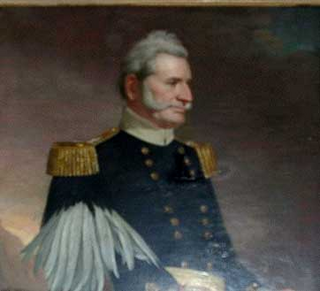
Bennet C. Riley was the seventh and last military governor of California. Riley ordered the election of representatives to a state constitutional convention, and handed over all civil authority to a Governor and elected delegates at the end of 1849; the following year, California joined the U.S. as a state. He participated in the War of 1812 on Lake Ontario. He also served in the United States Army during the Seminole War in Florida, and Mexican–American War.
Eleazer Derby Wood was an American Army officer in the War of 1812.
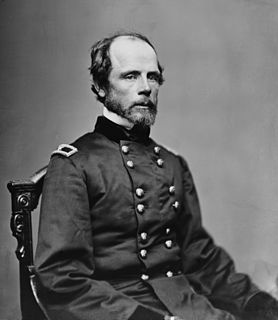
Darius Nash Couch was an American soldier, businessman, and naturalist. He served as a career U.S. Army officer during the Mexican–American War, the Second Seminole War, and as a general officer in the Union Army during the American Civil War.

Barnard Elliott Bee Jr. was a career United States Army officer and a Confederate States Army general during the American Civil War. He was mortally wounded at the First Battle of Bull Run, one of the first general officers to be killed in the war. During that battle, he was responsible for inspiring the famous nickname for Brig. Gen. Thomas J. "Stonewall" Jackson.

Edmund Pendleton Gaines was a career United States Army officer who served for nearly fifty years, and attained the rank of major general by brevet. He was one of the Army's senior commanders during its formative years in the early to mid-1800s, and was a veteran of the War of 1812, Seminole Wars, Black Hawk War, and Mexican–American War.
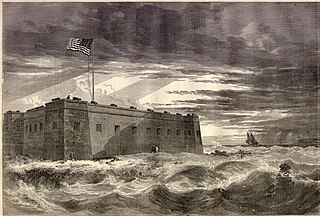
The Battle of Santa Rosa Island was an unsuccessful Confederate attempt to take Union-held Fort Pickens on Santa Rosa Island, Florida.

Truman Seymour was a career soldier and an accomplished painter. He served in the Union Army during the American Civil War, rising to the rank of major general. He was present at the Battle of Fort Sumter. He commanded the Union troops at the Battle of Olustee, the only major Civil War battle fought in Florida.
Useppa Island is an island located near the northern end of Pine Island Sound in Lee County, Florida, United States. It has been known for luxury resorts since the late 19th century, and it is currently the home of the private Useppa Island Club. On May 21, 1996, it was added to the U.S. National Register of Historic Places, due to its archaeological significance.

William Hays was a career officer in the United States Army, serving as a Union Army general during the American Civil War.

John Milton Brannan was a career United States Army artillery officer who served in the Mexican–American War and as a Union brigadier general of volunteers in the American Civil War, in command of the Department of Key West in Florida and assigned to Fort Zachary Taylor. Most notably, he served as a division commander of the Union XIV Corps at the Battle of Chickamauga.
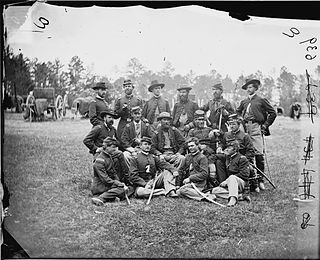
The Horse Artillery Brigade of the Army of the Potomac was a brigade of various batteries of horse artillery during the American Civil War.
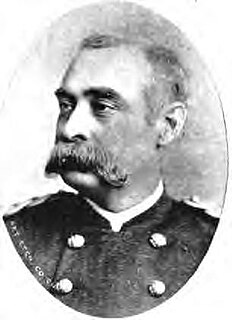
George Morton Randall was a major general in the United States Army, noted for his service in the American Civil War and Indian Wars. He was born in Conneaut, Ohio, the son of Brewster Randall (1807–1880) and Harriet Eliza Fifield Randall (1819–1878).

For this article, “Company A” and “Battery A” are interchangeable. A battery of four to six cannons, with two to three two-cannon sections was the basic unit of the artillery branch. The organization was commanded by a captain with first and second lieutenants as section chiefs and chief of caissons. A battery organization was roughly company strength, as it related to the infantry branch. As such, the formal designation of an artillery battery by the U.S. Army was “company.”
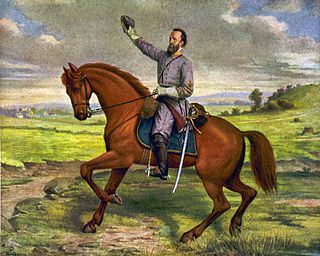
Stonewall Jackson’s military career consists of a combination of various brevet, temporary, and permanent appointments in no less than five different military organizations.
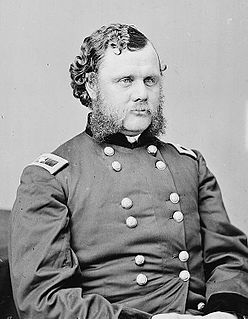
Robert Ogden Tyler was an American soldier who served as a general in the Union Army during the American Civil War. He was commander of the Artillery Reserve of the Army of the Potomac at the Battle of Gettysburg in July 1863, where his artillery batteries played an important role in the Union victory. Tyler also led a division of heavy artillery turned infantry during the Overland Campaign of 1864. He was severely wounded at the Battle of Cold Harbor and relegated to administrative duties for the remainder of the war.
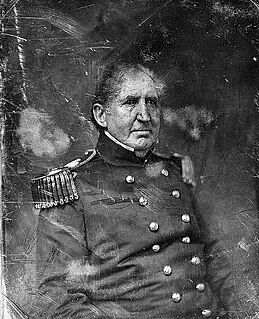
Ichabod Bennet Crane was an American career military officer for 48 years and the probable namesake of the protagonist in Washington Irving's The Legend of Sleepy Hollow.

John Lane Gardner (1793–1869) served in the U.S. Army eventually achieving the rank of brevet Brigadier General after serving in the American Civil War having also served in the War of 1812, the Second Seminole War and the Mexican–American War. After Gardner retired from military service he devoted time to recruiting for the Army.
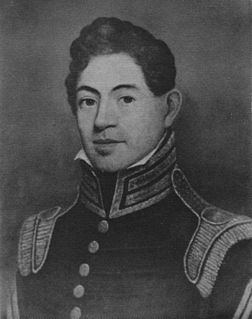
Benjamin Kendrick Pierce was a career officer in the United States Army. He was a son of New Hampshire Governor Benjamin Pierce and brother of President Franklin Pierce. Benjamin K. Pierce was a veteran of the War of 1812, the Second Seminole War, and the Mexican–American War, and rose to the rank of lieutenant colonel in the Army and colonel in the Florida Militia.
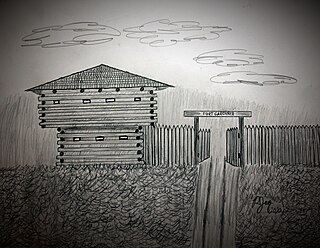
Fort Gardiner was a stockaded fortification with two blockhouses that was built in 1837 by the United States Army. It was one of the military outposts created during the Second Seminole War to assist Colonel Zachary Taylor's troops to capture Seminole Indians and their allies in the central part of the Florida Territory that were resisting forced removal to federal territory west of the Mississippi River per the Indian Removal Act.















